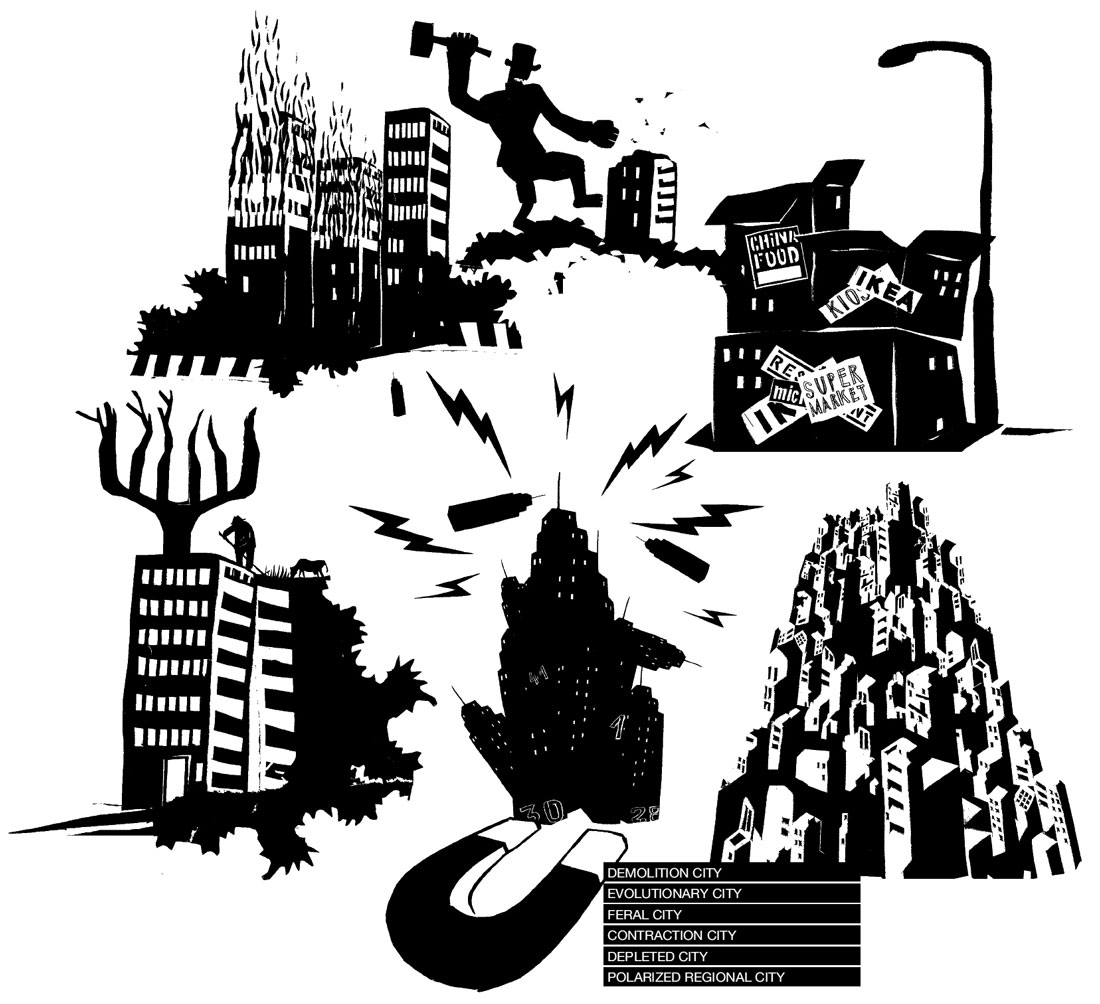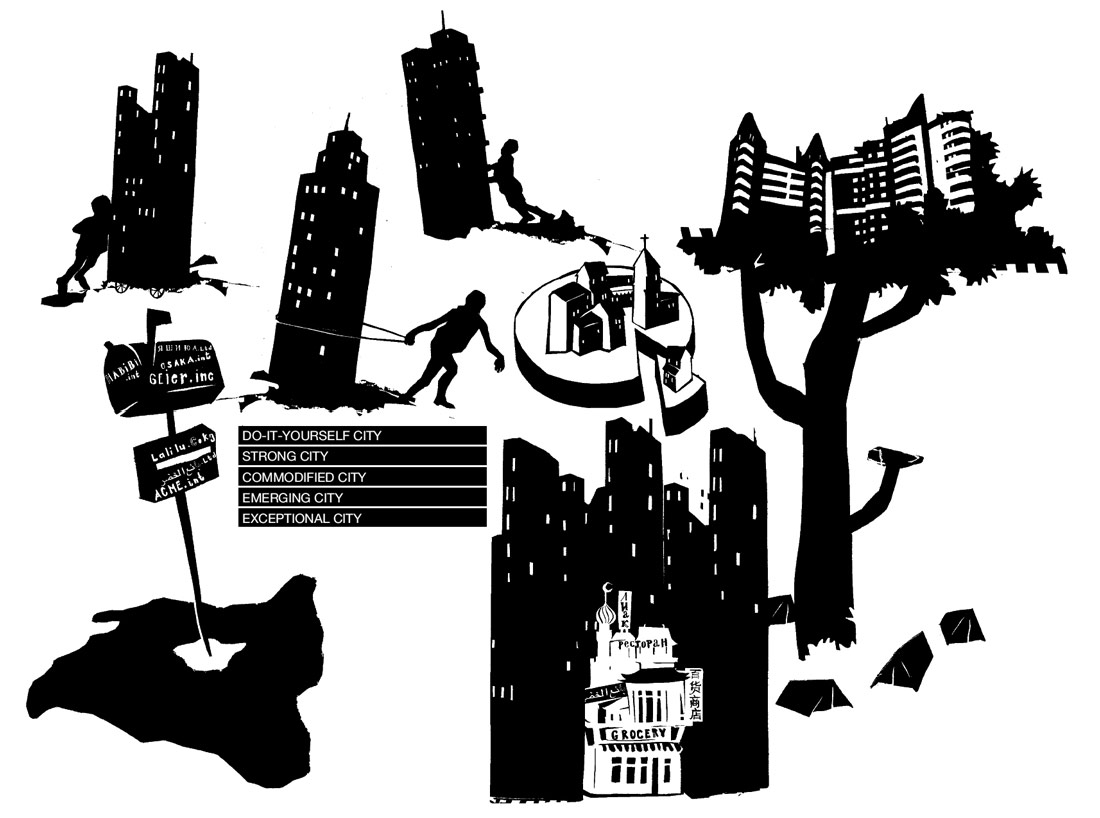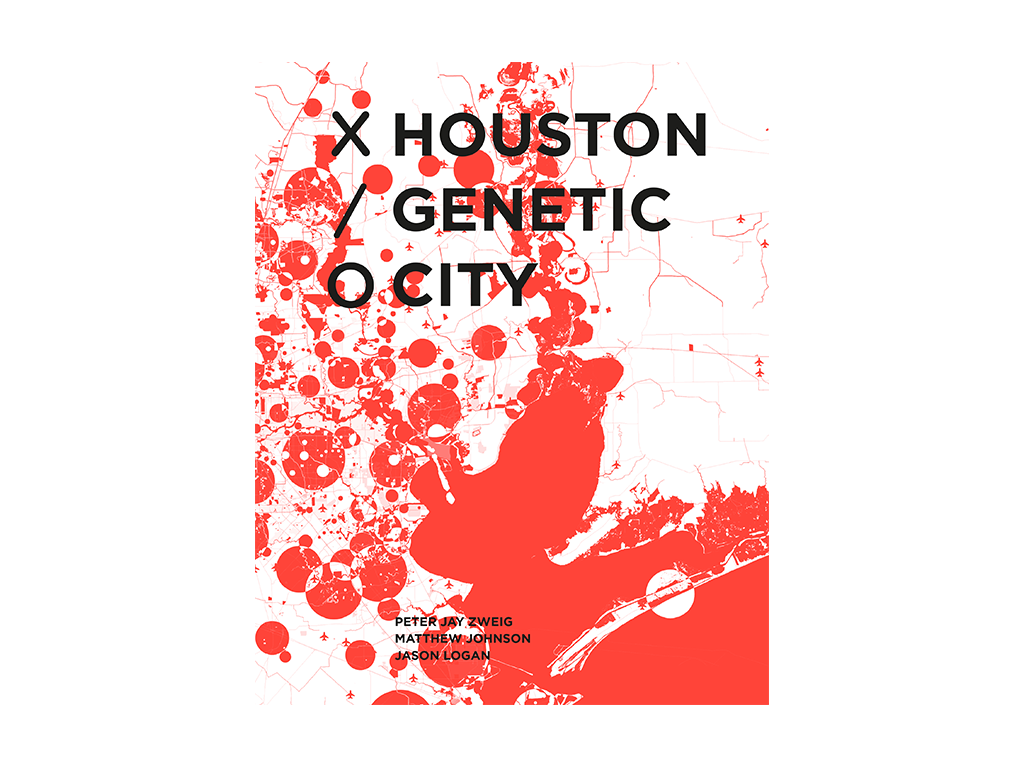How can the unplanned process of shrinkage be qualified? Strategies for action to date have failed to formulate a satisfactory answer to this question.
If we agree with the French sociologist Pierre Bourdieu that social space translates into physical space, it must be said that social problems are reflected in the crisis of physical space in shrinking cities, and that without efforts to address this crisis, little of substance can be said about the transformation of cities. But that is not all. Not only are social constellations expressed in urban space —which can be read as a kind of mapping of them— but social problems are reflected in the conception of the models for action themselves (and their crises).
In the days of the High Modernism of architecture and urban planning, people still dreamed —building on the political ideas of socialism and a general faith in progress— of overcoming conflicts, of harmony in an ideal society, of eliminating the contradiction between city and countryside. Essential to this model is the idea of overcoming disparities of social space and producing living conditions based on equal value. The presumption was that economic aid to lesser-developed regions was desirable not only for reasons of social policy, but also for reasons of economic policy, for the funds invested there would have the greatest spin-off effects on growth. Economic and social goals supported each other in a win-win situation —or so the assumption went. Today, the opposite view is prevalent: only in the existing growth areas of large agglomerations can economic development be pursued effectively with the maximum spin-off effect on growth. This view results in a dilemma: should the existing funds be invested for the greatest effect on growth, thus maximising the wealth of the society as a whole, while simply putting up with increasing polarisation of the social geography? Or, should we renounce growth and concentrate on balancing differences in living conditions?
Shrinking cities question existing social practices, values, and models and thus call for fundamental cultural reflection and re-evaluation. Can differences take a positive turn without fostering social polarisation? Is urbanism conceivable without density? Can slowness itself represent quality? What role does property play in the use of space? Can unused spaces and materials be used in different ways? Are there informal practices that can be read as positive models for action? How do mentalities and identity crises influence urban space?
Every model for action is structurally incomplete: it may be successful in certain areas, but in others it will have little effect or even worsen the problems. The ideas behind the ‘entrepreneurial city’ that have been practiced in shrinking cities like Manchester, Birmingham, and Baltimore exemplify this. On the one hand, they have achieved remarkable success at revitalising city centres, on the other, they have tended to have negative effects on outlying districts because less public funding is available for them even as they continue to suffer from economic decline and population loss.
Any urban development plan is biased. Rather than offering an allegedly objective or neutral promise of salvation through planning, this bias has to be exposed and negotiated. There needs to be a discussion about what social ideas, what interests, and what goals manifest themselves in a given project. There needs to be a re-politicisation of urban development without having it completely absorbed by politics, as happened in the 1970s.
In the context of shrinkage, there needs to be a new debate over the instruments of planning analogous to the one that took place at the beginnings of High Modernism: the development of new tools of action was essential to the formation of the architecture and urban development of this period. On the basis of a new socio-political model, new clients and sponsors were created, as were new forms of financing, new models for taxation, new concepts for community politics, new institutions, and so on. Today we urgently need to address such themes once again. For years, countless urban development plans have been produced in reports and urban development proposals, in competitions and direct commissions, yet they have not had any noticeable effect. One reason: all the projects are based on growth-oriented models for action that do not take hold in contexts of shrinkage, making the plans obsolete from the outset.
Urban development is influenced by many different forces that are based on a wide range of structures for decision-making, developmental processes, and power structures. Most of them lie outside the level on which urban planning and local action occur. Indeed, they extend across all conceivable scales: from the neighbourhood to the globe. For this reason, giving shape to urban space cannot be limited to the local, but calls for action on a number of levels that are only loosely connected. We have investigated various possible fields of action over the course of our work in the Shrinking Cities project. The field “Deconstructing” examines the questions of how urban rollback —that is, the process of ‘deurbanisation’— can be shaped and what qualities can be obtained by that which remains. The field “Reevaluating” explores how the traditional, the abandoned, can be re-appropriated and used differently. The field “Reorganising” is concerned with the question of social organisation: how can processes, structures, and programs be conceived differently in order to create new opportunities for development? The field “Imagining” considers urban action from the perspective of the imagination and addresses mental processes of communication, memory, identity creation, and the production of desire. For these respective fields of action we formulated several urban concepts, each of which encompasses the complexity of urban reality only in part and is thus unavoidable incomplete. They outline conceptual models, which are the basis for any kind of urban action. They make the ideological premises explicit, and in turn negotiable. Within the course of the project Shrinking Cities these urban models were exemplified with a series of studies, proposals, and critiques.
Deconstructing
Demolition City
Demolition is a means of adjusting shrinking cities to a drop in local demand. Tearing down the old to make way for the new has always been part of the history of urban development. Demolition today has gained a hitherto unknown quality: it is an end in itself. It hence becomes an issue in itself. The question of dying cities follows as a consequence: what does it mean when cities completely disappear?
Evolutionary City
Cities and buildings are subject to a constant process of construction and decay, the course of which can be rarely anticipated. Planning means creating spatial structures that are open to various future developments and that thus become spaces of potential. Their specific indeterminacy generates architectonic and urban qualities. Design can also consist of making processes of transformation visible and thus can challenge our perception of permanence.
Feral City
Urban withdrawal creates vacant spaces. Wasteland, forests, and fields creep back into the city and increasingly determine its look and its structure. Typical landscapes thereby undergo change and absorb urban elements and functions. Urban agriculture or community gardens can generate new social orgworks or the basis for local economies.
Contraction City
Shrinkage stirs hopes that cities might be reduced to their essential core and in this way make qualitative gains. Depending on the respective viewpoint, the aim of such controlled shrinkage is to develop a compact city, an urban archipelago, or a reticular strip city. Even when, given the open property market and a mobile society, such comprehensive spatial concepts cannot be realised, they do mould perceptions of the city and influence where spatial interventions are located.
Depleted City
Shrinking cities have reduced density, yet spill over into surrounding areas despite the decline in urban substance. Depleted cities are characterised by older populations, for it is usually the young who leave. In areas with decreasing densities, spatial interventions, urban planning strategies, new organisational forms, and digital technologies help ensure that existing urban qualities can be retained and new ones can be created. The parameters of time, mobility, and access take the place once held by physical presence. Pendular migration and tourism turn places into part-time towns.
Polarised Regional City
The ideal of equitable development is being eroded. Provocative models propose that spatial development should be polarised: compaction of urban agglomerations vis-à-vis the depletion of peripheral areas. Can regional disparity be turned into a productive force? Can peripheral regions develop qualities beyond those of traditional growth scenarios? The potential for taking action is increased through the creation, within present agglomerations, of regional administrations that encompass zones of shrinkage and growth in equal measure.
Reevaluating
Temporary City
A surplus of freed-up space provides new possibilities. A dearth of long-term options for repurposing is replaced by the ephemeral activities of interested parties who have little capital to spare. They experiment with new uses and forms of cooperation, create social interactions, and give new cultural meaning to what was found there. Not every vacant space will find interested parties, and the fleeting actions are of limited duration. Still, sometimes they become seeds for longer-term developments.
Pioneer City
Many people are leaving shrinking cities and regions; for others, this opens up new perspectives on life. Pioneers of space —whether entrepreneurs, dropouts, or cultural producers— are moving into shrinking areas in order to build new lives, and bringing with them great motivation and a willingness to invest. The unutilised and cheap space in interesting buildings and landscapes offers opportunities for alternative lifestyles. In larger cities, there are efforts to put such practices to use for place-making.
Reinterpreted City
Materials and buildings that are no longer used take on new functions through reinterpretation and reorganisation. This helps save resources. Through the reforming of existing material, social transformation is assimilated culturally. A productive tension results from the difference between the given and the new situation desired. This tension produces new typologies, programs, and connections, and also reveals unexpected qualities of the seemingly obsolete large housing developments of the post-war era.
Reorganising
Do-It-Yourself City
Crises in government organisation and economic development have led to a new emphasis on the self-organisation of people in urban areas. Citizens are being challenged to take economic, social, cultural, and urban development into their own hands. This has led to contradictory goals: is the intention to reduce state spending and hand over the responsibility for public assistance and the common good to citizens? Or should the authority for decisions about resources be decentralised, with more power given to the less privileged and space for innovation created?
Strong City
The crisis of the city can only be overcome by strengthening the city. The authority to make decisions and plan a course of action should be shifted from the state back to the municipalities, which must in turn be reorganised. The spatial expansion of the municipalities is a prerequisite for shaping urban development and balancing out regional disparities. Competencies and tasks should be renegotiated between municipalities, society, and business, yet without orienting urban development toward private economic criteria in the sense of an ‘entrepreneurial city’.
Commodified City
In capitalism, the city is a commodity. Economic commodification of urban spaces shapes the city; the logic of market growth determines the rules. Contrary to the assumptions underpinning the ideal model of the economy, the individual drive toward economic efficiency sometimes works against the goal of achieving overall prosperity. Communal forms of granting loans and utilising property can open up new possibilities and promise greater prosperity for both the individual and society as a whole, particularly during times of crisis.
Emerging City
The city is only to a limited extent the product of conscious planning; largely it is the result of rules and forces originating far beyond the realm of planning. A city’s development is shaped by the consequences and side effects of laws, funding programs, markets, and technological progress. Relevant interventions in urban development are thus dependent upon changes in the social parameters, such as in immigration policy, property laws, or economic development measures.
Exceptional City
Territorial islands allow for experimentation with special rules or measures to balance out local weaknesses, for example by granting unique privileges. Since the Middle Ages, cities have been granted special rights upon their founding or during periods of decline, making them attractive for immigrants and enabling them to revitalise the economy. The special economic zones of today are limited exclusively to offering economic incentives. Emancipatory projects and social-libertarian experiments, by contrast, are very rare.
Imagining
Communicating City
Cities are places of communication and exchange. Yet this basic condition of urban life is critically undermined by the effects of shrinkage —migration, population decline, fragmentation, and introversion. Artistic interventions foster communication and new relationships between individuals, between a city and its residents, and between the people who moved away and those left behind. At the same time, novel forms of representation and changes in perception lead to reflection about oneself and a reappraisal of one’s environment. The very diversity of conflicting opinion lends a new quality to public space.
Marketing City
Cities thrive on an influx of residents, tourists, and investors.
After losing economic sectors once vital to their identity, cities seek to create a new profile and promote their locational advantages by means of marketing campaigns, major events, and prestigious architectural projects. Urban marketing targets a public beyond the city as well as local residents and thus must attempt to satisfy contradictory demands.
Profiled City
Cities acquire a profile by building on their singular local strengths. This gives the urban transformation of shrinkage —at first a disintegration imposed by external forces— direction and contour. Conflict, crises, and difference can be catalysts for the development of new identities and local character. Urban profiling is imperative in order that cities with uneven spatial development can assert themselves as competitive locations.
Imaginary City
Imagination generates different pictures of the past and the future. Practices of remembrance mould our understanding of history and in this way influence how we see the present. Desire designs another future, opens up space for new possibilities, and thus sparks off change in the present. Urban action is born of the power of our imagination.
















